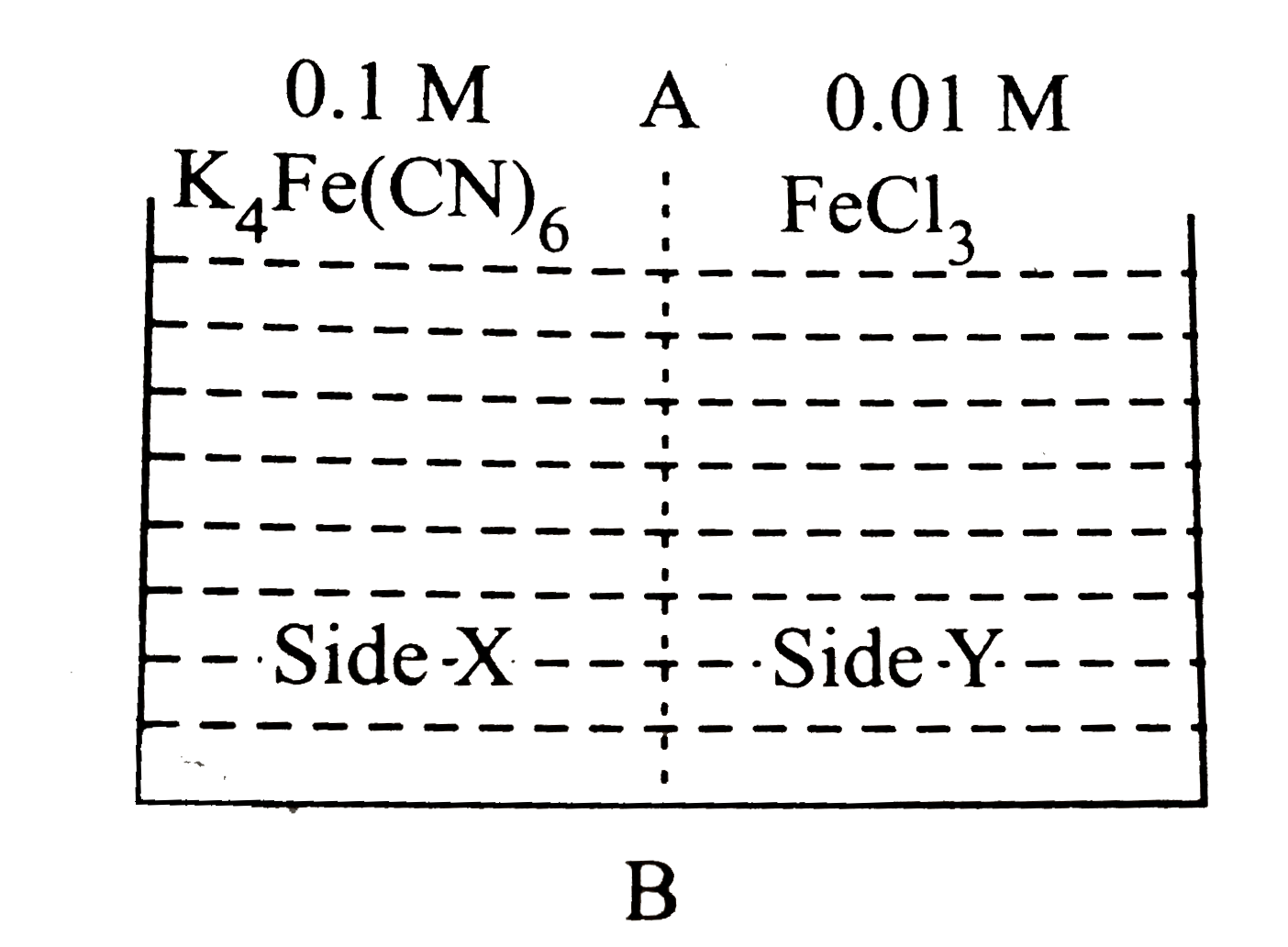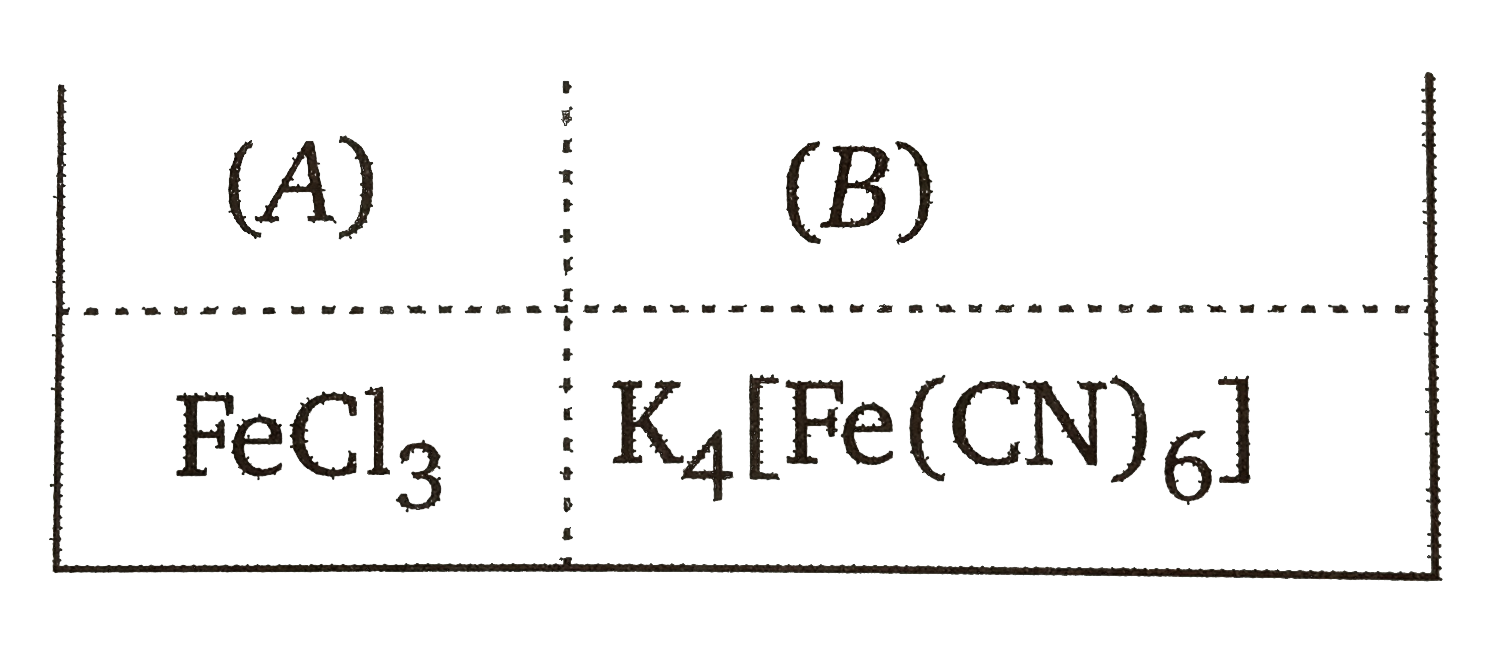FeCl3 on reaction with K4[Fe(CN)6] in aq solution gives blue colour and these are separated by a semi permeable membrane Due to osmosis there is
blue colour formation in the solution of FeCl3
blue colour formation in the solution of K4[Fe(CN)6]
blue colour formation in both the solutions
no blue colour formation
The correct Answer is:D
Topper's Solved these Questions
- SOLUTIONS Book:AAKASH SERIESChapter:SOLUTIONS Exercise:Objective Exercise -2
Explore 110 Videos
- SOLUTIONS Book:AAKASH SERIESChapter:SOLUTIONS Exercise:Objective Exercise -3 (PREVIOUS NEEET/AIPMT )
Explore 24 Videos
- SOLUTIONS Book:AAKASH SERIESChapter:SOLUTIONS Exercise:Subjective Exercise-3 (Problems)
Explore 7 Videos
- SOLIDS STATEBook:AAKASH SERIESChapter:SOLIDS STATEExercise:PRACTICE EXERCISE
Explore 63 Videos
- STATES OF MATTER Book:AAKASH SERIESChapter:STATES OF MATTER Exercise:ADDITIONAL PRACTICE EXERCISE -PRACTICE SHEET (ADVANCED) (LINKED COMPREHENSION TYPE QUESTIONS) (PASSAGE- IV)
Explore 2 Videos
Similar Questions
FeCl3 on reaction with K4[Fe(CN)6] in aqueous solution gives blue colour.

These are separated by a semipermeable membrane AB as shown. Due to osmosis there is:
View SolutionFeCI3 on reaction with K4[Fe(CN)6] in aqueous solution gives blue colour.

These are separated by a semipermeable membrane AB as shown. Due to osmosis there is:
View Solution
Knowledge Check
FeCI3 on reaction with K4[Fe(CN)6] in aqueous solution gives blue colour.

These are separated by a semipermeable membrane AB as shown. Due to osmosis there is:Ablue colour formation in side XBblue colour formation in side YCblue colour formation in both of the sides X and YDno blue colour formation.FeCl3 on reaction with K4[Fe(CN)6] in aqueous solution gives blue colour. These are separated by a semi-permeable membrane AB as shown. Due to osmosis, there is
 ABlue colour formation in side X.BBlue colour formation in side Y.CBlue colour formation in both of side X and Y.DNo blue colour formation.
ABlue colour formation in side X.BBlue colour formation in side Y.CBlue colour formation in both of side X and Y.DNo blue colour formation.Two solutions A and B are separated by semipermeable membrane. If liquid flows from A to B, than
AA is less concentrated than BBA is more concentrated than BCBoth have same concentrationDNone of these
FeCI3 on reaction with K4[Fe(CN)6] in aqueous solution gives blue colour.

These are separated by a semipermeable membrane AB as shown. Due to osmosis there is:
View SolutionFeCl3 on reaction with K4[Fe(CN)6] in aqueous solution gives blue colour. These are separated by a semi-permeable membrane AB as shown. Due to osmosis, there is

View SolutionF3CI3 on reaction with K4[Fe(CN)6] in aqueous solution gives blue colour. These are separeted by a semipermeable membrene. Will tere be the appearance of a blue colour on the side X due to osmosis ?
View SolutionFeCl3+K4[Fe(CN)6]→ ?
View SolutionTwo solution (A) containing FeCl3(aq.) and separated by semipermeable membrane sa shown below. If FeCl3 solution on reaction with K4[Fe(CN)6] in aqueous solution gives blue colour of Fe4[Fe(CN)6], the blue colour will be noticed in:

View Solution
